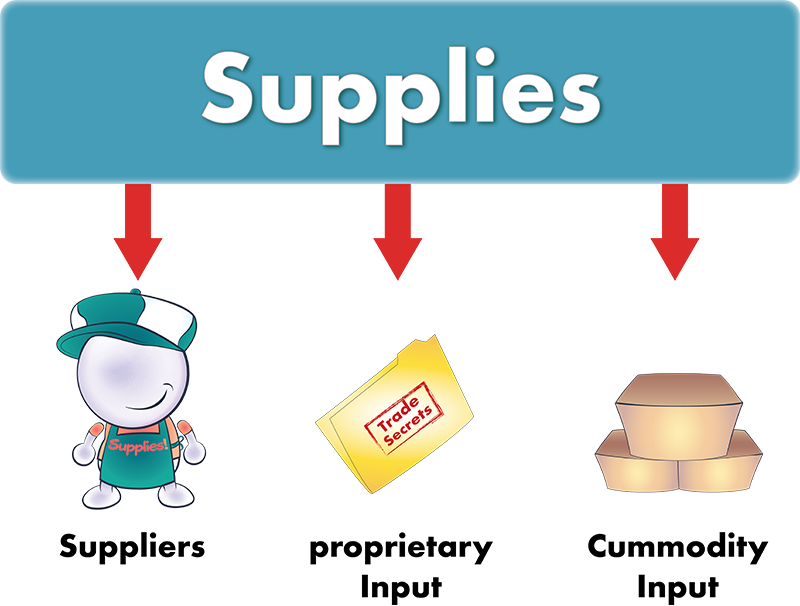Matrix Management Wiki
Home » The Structure Key » 3E. Sectors and Vectors
- 3E1. Every organization takes in inputs/supplies (or in the case of some nonprofit organizations, donations or grants). They then convert these inputs into outputs (products, and services) through either operating processes or projects. The outputs are then delivered to customers, and in the case of the profit sector, the customer then pays the organization for these outputs. This is called the input-to-customer process.
- 3E1i. Sectors are segments of this input-to-customer process.
- 3E1ii. Examples of sectors include:
- 3E1iia. Suppliers
- 3E1iib. Supplies (inputs)
- 3E1iic. Operating processes or projects
- 3E1iid. Products/services (outputs)
- 3E1iie. Customers
- 3E1iif. Markets
- 3E2. If a sector contains large segments within it, the sectors can be further divided into subsectors.
- 3E2i. For example, the supplier sector might contain three subsectors: suppliers, proprietary inputs, and commodity inputs.
- 3E2ia. One subsector (suppliers) is aligned to the organizations that supply inputs. The other subsectors are aligned to the actual input (the proprietary or commodity supply or input).
- 3E2ii. Figure 3.2. Diagram of a sector with subsectors.

- 3E3. A vector is a segment composed of a portfolio of internally focused strategic initiatives/projects. Each vector portfolio is a subportfolio of the overall internally focused portfolio of initiatives/projects.
- 3E3i. Examples of vectors include: technology, infrastructure, organizational development, etc.
- 3E3ii. The initiatives within vectors are typically broad, organization-wide changes that require resources from multiple vertical areas and that take more than one year to complete.
- 3E3iii. Initiatives can be further segmented into programs, which in turn can consist of projects.
- 3E3iiia. Each vector is a portfolio of initiatives, programs, and projects.
- 3E3iv. There are no functional initiatives; these must be included as part of a vector.

